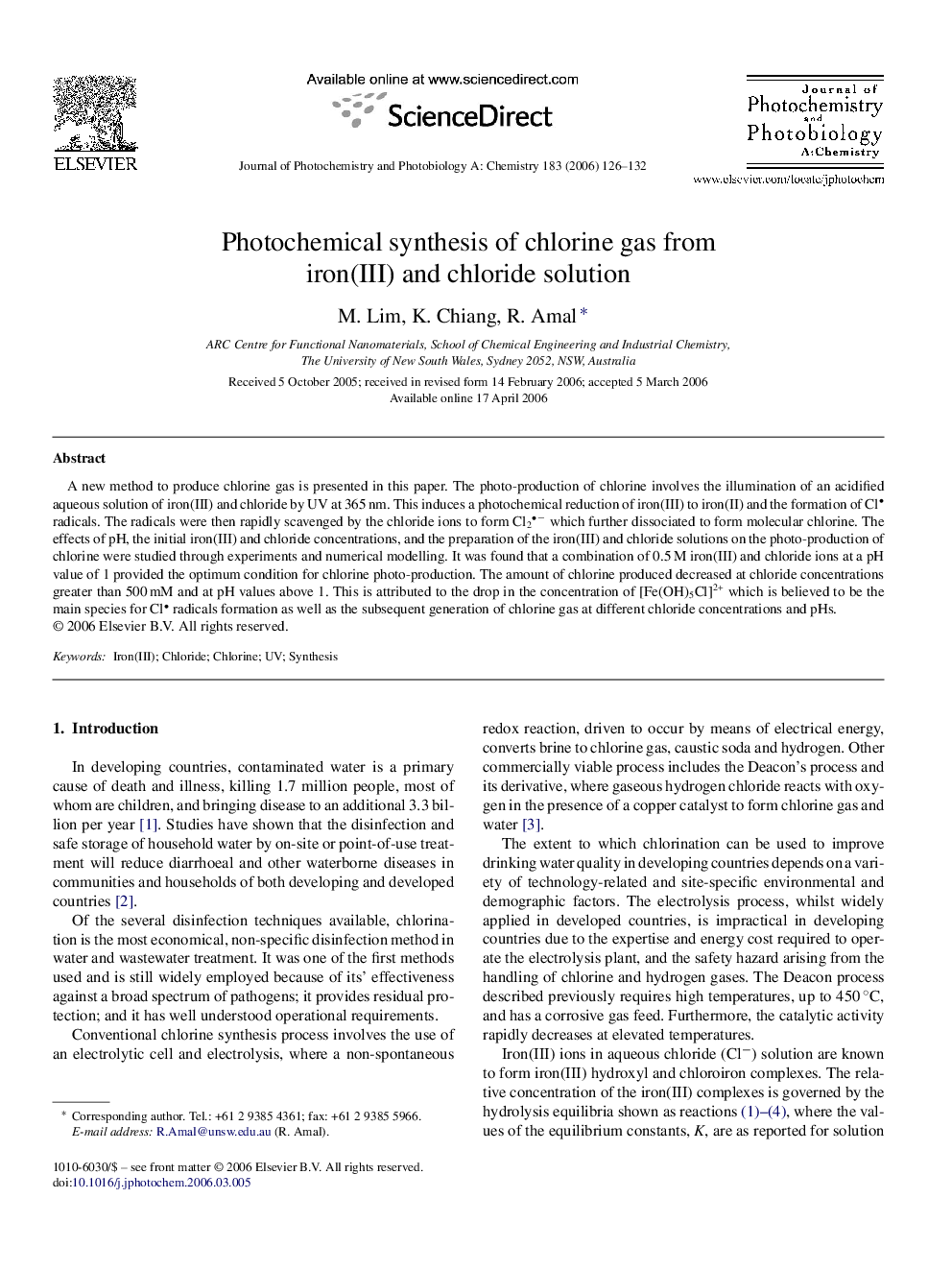| Article ID | Journal | Published Year | Pages | File Type |
|---|---|---|---|---|
| 28447 | Journal of Photochemistry and Photobiology A: Chemistry | 2006 | 7 Pages |
A new method to produce chlorine gas is presented in this paper. The photo-production of chlorine involves the illumination of an acidified aqueous solution of iron(III) and chloride by UV at 365 nm. This induces a photochemical reduction of iron(III) to iron(II) and the formation of Cl radicals. The radicals were then rapidly scavenged by the chloride ions to form Cl2− which further dissociated to form molecular chlorine. The effects of pH, the initial iron(III) and chloride concentrations, and the preparation of the iron(III) and chloride solutions on the photo-production of chlorine were studied through experiments and numerical modelling. It was found that a combination of 0.5 M iron(III) and chloride ions at a pH value of 1 provided the optimum condition for chlorine photo-production. The amount of chlorine produced decreased at chloride concentrations greater than 500 mM and at pH values above 1. This is attributed to the drop in the concentration of [Fe(OH)5Cl]2+ which is believed to be the main species for Cl radicals formation as well as the subsequent generation of chlorine gas at different chloride concentrations and pHs.
